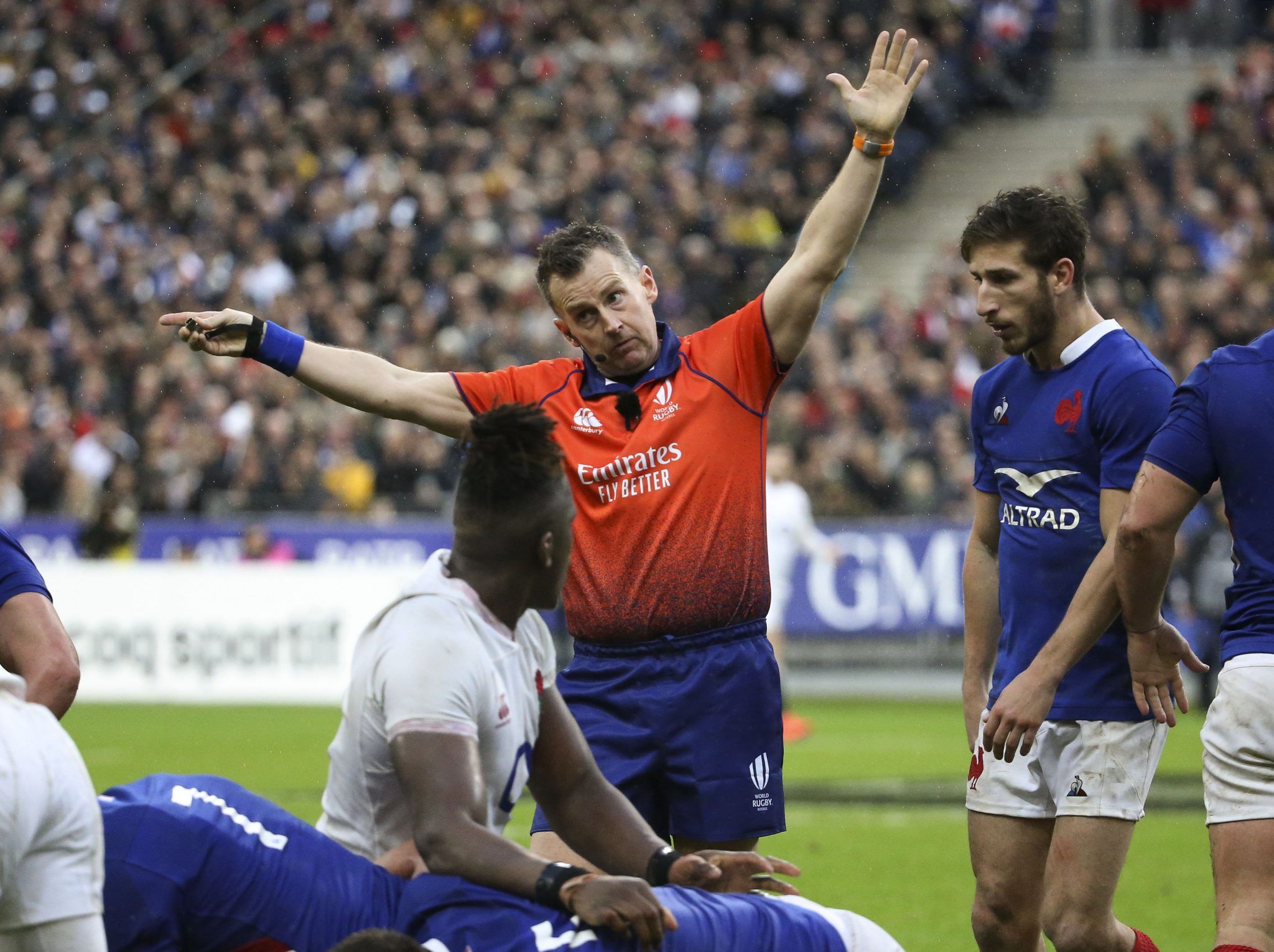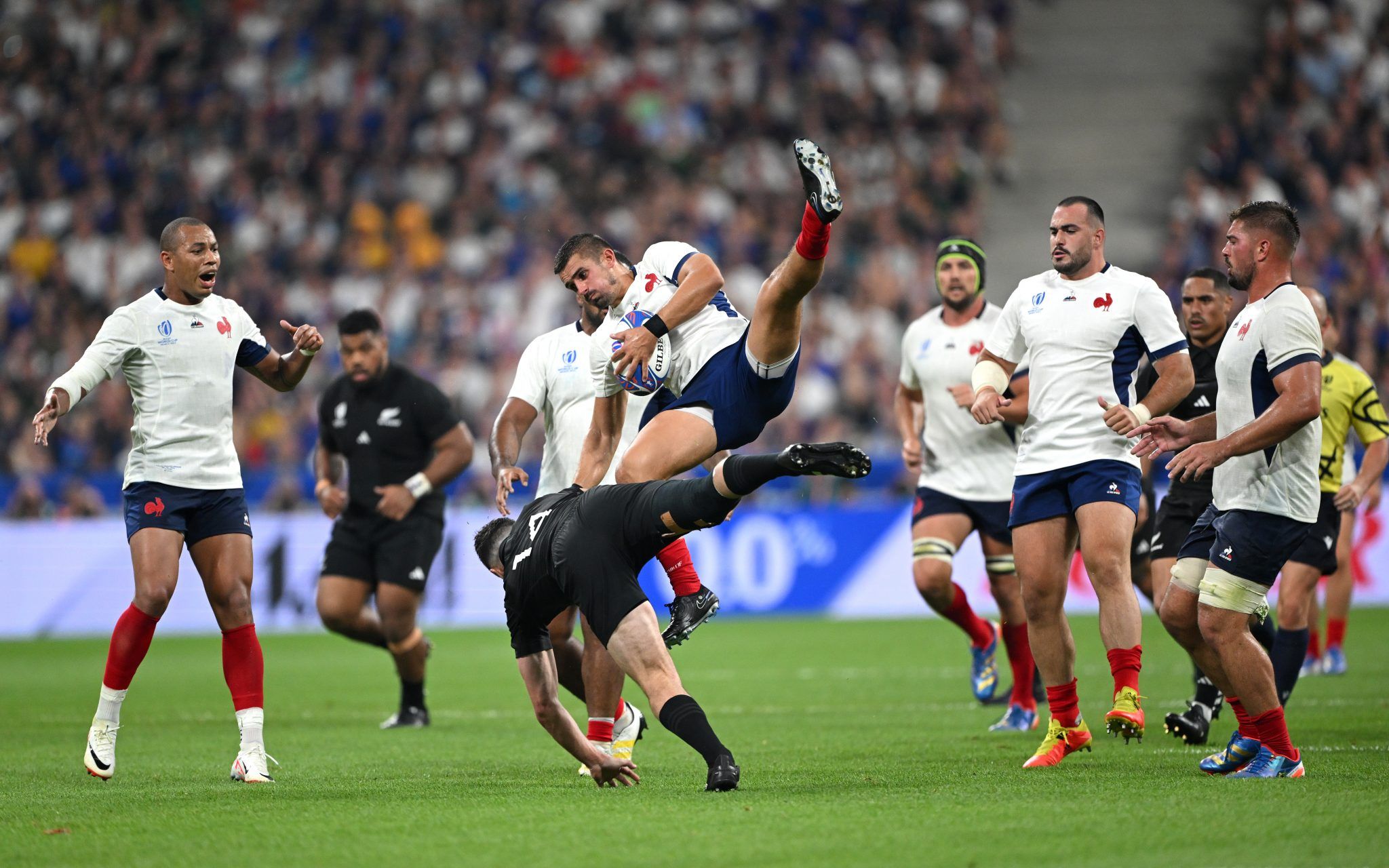There’s no better man to settle a rugby rules debate…
As is always the case in major sporting tournaments, much of the media’s gaze has been placed upon the refereeing decisions made in the opening round of this autumn’s Rugby World Cup, but former Test referee Nigel Owens is on hand to explain why fans shouldn’t be too worried.
Speaking to World Rugby in the aftermath of the first run of games, Owens delivered a succinct breakdown of the four most controversial referring decisions, including disagreeing with Rob Kearney’s scathing assessment of Angus Gardiner’s decision-making during South Africa’s battle with Scotland.
 Owens previously refereed the Rugby World Cup Final back in 2015. (Credit: Getty Images)
Owens previously refereed the Rugby World Cup Final back in 2015. (Credit: Getty Images)Nigel Owens breaks down World Cup refereeing decisions:
In the first half of proceedings at the Stade Velodrome in Marseille, Springbok centre Jesse Kriel made a questionable hit on Scottish number eight Jack Dempsey, which resulted in Gardiner showing Kriel a yellow card.
“The TMO does not have clear evidence to show there was actually head contact. So, again, it comes down to your view… if you can’t really see if it actually is head contact and you don’t have evidence to say there was, then you don’t have foul play and the game carries on.
“In the TMO’s view here, he feels there is no clear evidence of head-on-head contact, and thus why we played on.”
The Kriel incident particularly incensed English rugby fans, after back-row Tom Curry received a revised red card for a seemingly similar tackle from the bunker TMO, after initially being shown an on-field yellow for his hit on Argentinian full-back Juan Cruz Mallia. Speaking to the differences in outcome, Nigel Owens stated;
“So what happens here is that the Argentinian player jumps in the air and then comes down. As he comes down, pretty much straight away Tom Curry initiates contact with the Argentinian player and we have contact with the head.
“It all comes down to something as simple as this. If you felt that Curry was reckless, and he could have done something to avoid what happened, then we don’t have any mitigation and we have a red card.”
 Will Jordan was shown a yellow card for colliding with French full-back Thomas Ramos in the air. (Credit: Getty Images)
Will Jordan was shown a yellow card for colliding with French full-back Thomas Ramos in the air. (Credit: Getty Images)Officials making the “right calls” says Nigel Owens:
There was more drama on opening night too, as the All Black’s Will Jordan escaped a red card for taking out French full-back Thomas Ramos under a high ball. Jordan was shown a yellow by referee Jaco Peyper, with the bunker system opting to stick with the on-field decision in this instance.
“Some people will be saying that he’s (Jordan) a bit unlucky because his eyes are always on the ball, but that is irrelevant. Once a player is in the air catching the ball, the onus is on the player on the ground to make sure he does nothing to put that player in danger.
“Because he is not in a realistic position to contest the ball, it then becomes illegal contact in the air and dangerous play, and it becomes about the way the player landed… in this instance here, they didn’t feel it met the red card threshold, and quite rightly so they gave a yellow card.”
Meanwhile, there were debates in Bordeaux as Fiji were denied a historic victory over a ragged Welsh side after a number of close calls went against the Pacific nation. In particular, there was much scrutiny over prop Peni Ravai’s non-try for Fiji during the second half. Regarding this decision, Nigel Owens explained;
“When a player is tackled short of the try line, and like anywhere else in the field of play, he’s entitled, as long as his actions are immediate, to place the ball. But once a player his held and we have a knee to the ground, then we have a tackle and the tackle laws apply.
“In this instance, if you have a closer look, when the player is tackled, his knee hits the ground, so the player then must immediately do something with that ball. But what he does do here is he uses that knee to propel himself forward and after doing that he then places the ball over the try line. What we have here is a good accurate decision by the referee via the TMO and therefore quite rightly so the try is not awarded.”
So, there you have it. Any debates or questions you may have had over the World Cup officiating have been swiftly laid to rest, for the time being at least. Here’s hoping that come Saturday night though, Irish fans are left recounting another mesmeric Johnny Sexton display, and not the actions of the game’s referee. Wayne Barnes, you have been warned.
Related Articles:
- Johnny Sexton decision hints at big team selection calls for Springboks and Scots
- O’Mahony and Farrell on the warpath as they defend “incredible” Mack Hansen
- Tonga’s crop of former All Blacks aiming to make World Cup history against Ireland
- “It was phenomenal” – Beirne hailed for his fitness as Ireland power on through the heat
- “I’d take the gamble” – Johne Murphy makes great World Cup point about Johnny Sexton






































